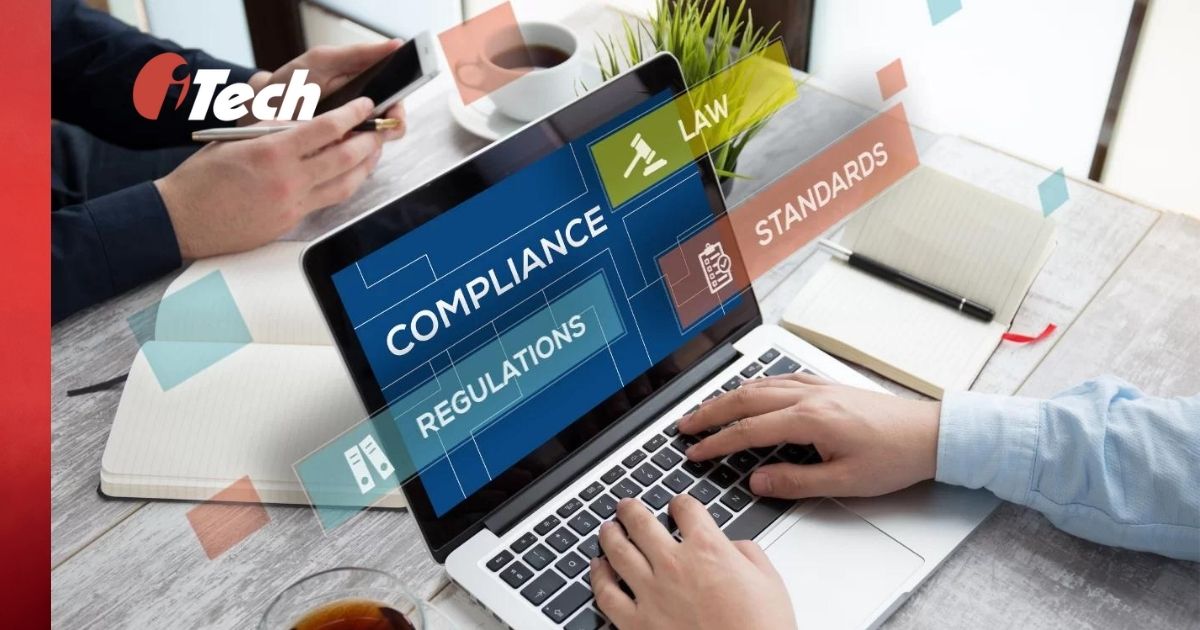Maintaining Vendor Compliance

The rules organizations must adhere to so they can maintain compliance is often hard for organizations to keep up with. Regulations seem to change monthly and the cost of being compliant keeps rising. Business operations that deal with sensitive data store this information digitally where cybercriminals are patiently waiting to pounce at the slightest vulnerability. Notice how up to now we have been talking about compliance from an internal perspective. What about vendor compliance? It is already tough to make sure your internal processes are compliant and maintaining vendor compliance is even more difficult. Is it even possible to maintain vendor compliance? The good news is that you can.
What is Vendor Compliance?
Vendor compliance involves checks to ensure vendors working with the organization adhere to the safety and legal policies and procedures as part of being a vendor. It’s a way of making sure that all vendors maintain the required certifications, licenses and training, and ensuring all their products and services are compliant.
Steps to Ensure Vendor Compliance
1 Conduct a third-party risk assessment
When you start to evaluate third parties using a third-party risk assessment, it is important that you understand all the risks involved in working with external vendors. If you don’t know the risks, it could be catastrophic for your business if something goes wrong.
All risks aren’t equal. A vendor risk management matrix allows you to prioritize the most severe risks your company faces. As mentioned previously, having a comprehensive view of today’s modern threat landscape is critical for preventing value losses. All companies must take some level of risk to succeed, but calculated risks based on a robust risk analysis will help businesses take risks in a way that helps achieve goals.
Third-party risk assessments are not isolated to just identifying potential risks. Evaluating vendors is equally as important as knowing the risks. Before you sign an agreement, it is important to evaluate every vendor, regardless of how small or what service or product they provide for your organization.
2 Create a vendor management policy
A vendor management policy is one of the main components of an organization’s broader compliance risk management strategy. A vendor management policy describes a company’s expectations about business dealings. For a vendor to work with a company, it must legally agree to the terms, which may include legal mandates, operational guidelines, and detailed consequences if the vendor does not perform up to standards
3 Drafting a Contract
It is true that a vendor compliance program must be agreed upon by all vendors. However, a company should draw up a unique contract for each third party to ensure specific goals and guidelines are met. This is because there is no one size fits all approach to vendor compliance or compliance in general, yes there are regulations that must be followed but those can change by industry and adhering to those requirements often results in the need for unique strategies. For example, regulatory compliance in healthcare is going to be different from regulatory compliance in banking.
4 Vendor Management
Don’t make the mistake of assuming that all these things mentioned above stop once you start working with a vendor. Companies should continue to oversee third-party arrangements, including operations, to ensure adherence to the contract and vendor compliance policy. It’s also important the company review that the vendor is following all necessary regulations and laws. Monitoring should also include tracking all the aspects of the vendor contract. Using software helps companies manage third-party relationships and engagements to improve business performance. It helps reduce disruption and possible negative impacts on the organization’s compliance, brand, and/or operations stemming from a vendor’s inability to deliver.
iTech IBM OpenPages Solution assists:
- Maintain an inventory of vendors and related engagements to organize and track key information
- Connect inventory to related risks and business lines to build and report a comprehensive view of third-party risk
- Collect key data from third parties and business users with the easily configurable questionnaire assessments
- Save questionnaire development time, by leveraging the included Shared Assessment SIG questionnaires
- Evaluate and tier third party relationships to determine level and frequency of review
- Automate the scheduling of questionnaires and risk assessments to your organization’s specifications with native workflow engine
- Integrate with business continuity and enterprise risk management processes to ensure complete management of third-party risk across the organization
- Ensure efficient collection of data from third parties with zero training user interface and third party access solutions to fit your organization’s security needs
- Flexible implementation available On-Prem or SaaS
